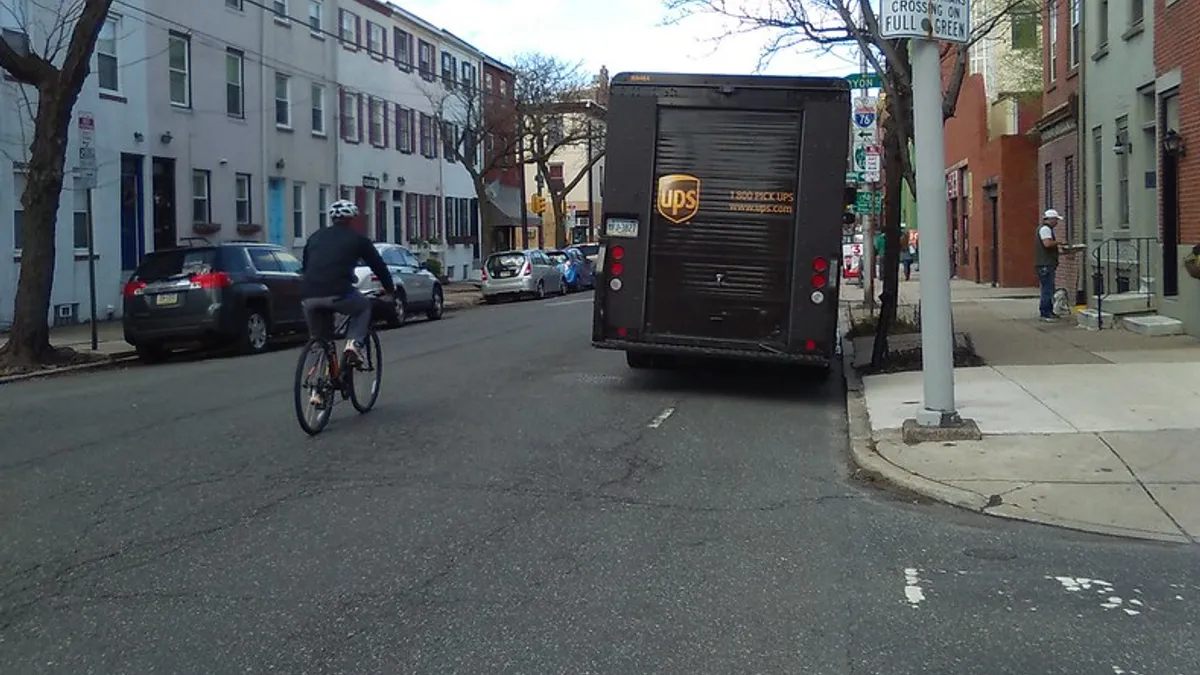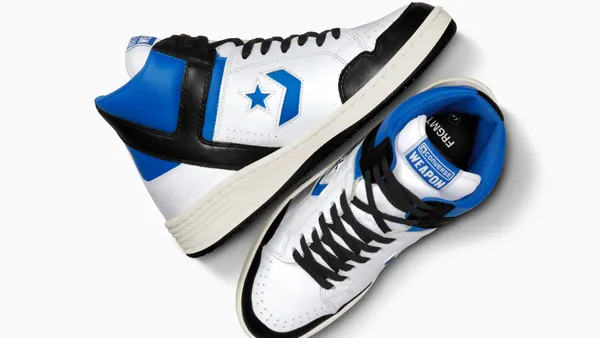Dive Brief:
- UPS expects to induct 1.75 million returns into its system every day this week, which would represent the highest weekly total of returns in the carrier's history, a spokesperson told sister publication Supply Chain Dive via email.
- The expected 8.75 million returns this week is a 23% increase over the highest week of returns for the 2019-2020 holiday season.
- The carrier's single-day record is 1.9 million returns — set Jan. 2, 2020.
Dive Insight:
Returns volume, like overall e-commerce volume, is following similar patterns from last year, in that the overall volume surge has dulled specific spikes. As e-commerce took a larger share of overall commerce in 2020, returns increased and diffused out over the holiday shopping period.
"The leveling out of returns across many days can largely be attributed to shifting purchasing habits accelerated by a global pandemic," said Nick Basford, UPS vice president of global retail and e-commerce strategy.
UPS' highest volume day for returns was Jan. 2, 2020, when the company processed 1.9 million returns, according to the spokesperson. That season holds the record for the largest single-day spike in returns for UPS, but each day within early 2021's busiest week for returns is expected to come just 150,000 returned parcels shy of that number.
"Think about this ... in 2012, the number of returns was more than 520,000 on the peak day of Jan. 3. That means that the amount has more than tripled since then," Basford said via email.
The uptick in e-commerce has exacerbated consumer behaviors that generate returns, such as "bracketing," which happens when a shopper orders multiple sizes of an item with the plan to only keep the best-fitting.
The good news, according to John Morris, executive managing director of CBRE's Americas industrial and logistics operation, is the returns are coming after months of capacity building on the part of logistics players, he said in early December.
Returns — often an overlooked cost center for retailers — can be a boon for carriers, depending on how they enter the network. According to Basford, most returns enter UPS' network via drop-off — encouraged by the increasingly common acceptance of returns without a shipping label or original packaging.
"We take returns seriously at UPS because it's serious business. We've built dedicated services that are focused squarely on the returns experience," Basford said.
For FedEx, too, returns were elevated beyond historic levels during the last six months of 2021, Chief Marketing and Communications Officer Brie Carere said on the carrier's earnings call Dec. 17.
"With the return season upon us, we expect these record highs to continue over the next several months," she said.
In late December, just after Amazon announced "no-box, no-label" returns at Whole Foods stores, Walmart announced FedEx will pick up Walmart returns from consumers' homes, in a move demonstrating the value the carrier sees in this volume.
In September, Carere explained the value of returns for carriers: "Returns drives e-commerce volume into our retail channels."
Drop-off schemes like FedEx's recent partnership with Happy Returns — a network of "return bars" that aggregate returns for retail clients to reintroduce merchandise into retail supply chains more productively — may help allay the operational cost of pickup. Many similar team-ups have developed in recent years between carriers and players like Amazon, Kohl's, Whole Foods, Dollar General and Walgreens.
Options and capacity exist for retailers to get their merchandise back from consumers, Morris said in December. The question is, do retailers have the internal capacity to physically or virtually "re-shelve" the merchandise that does make it back into their hands.
















